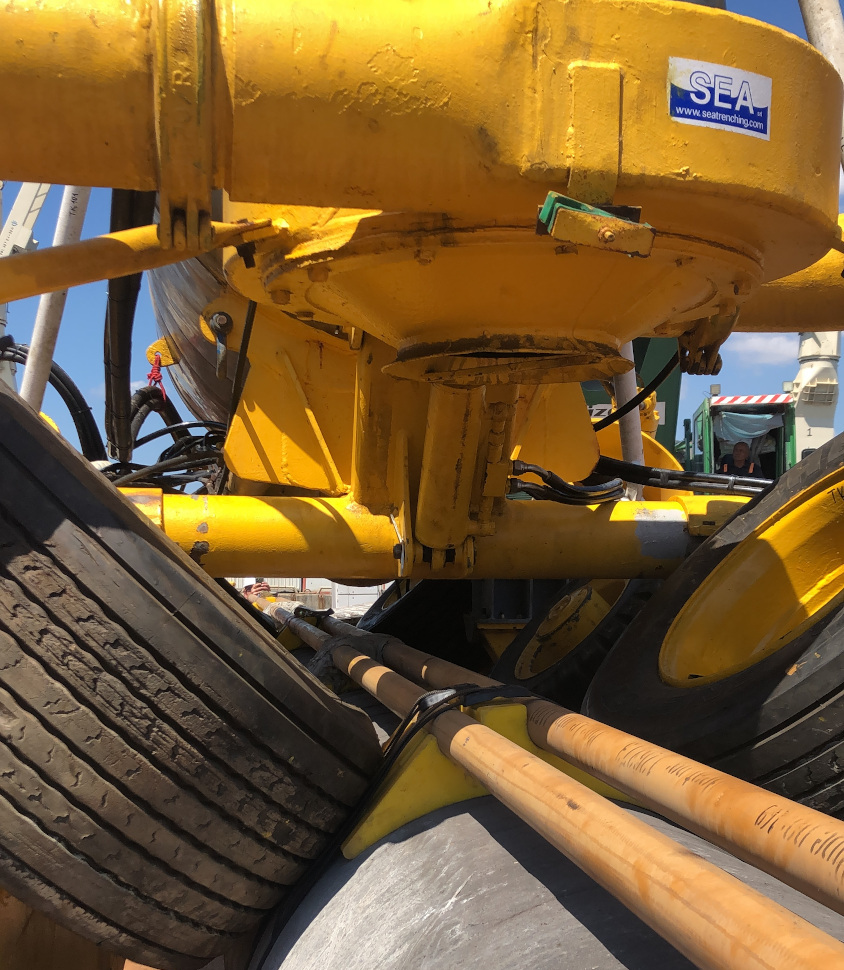Pipeline post-trenching
SEA’s core business consists in
underwater pipeline trenching,
up to 120m water depth, by using the post-trenching method:
and to the project needs.
The Post-Trenching Machines run on the product thanks to their driving wheels. During their advancement, the cutting wheels dredge the seabed underneath
the pipeline and the extraction pumps throw it laterally, creating a trench underneath the pipeline
of the requested depth.
This allows the pipeline to naturally bend on the trench bottom. If necessary, further passes can be carried out,
in order to either increase or adjust the reached
trench quota.
- from 3” to 60” diameter;
- bundled lines;
- piggy-backed lines.
and to the project needs.
The Post-Trenching Machines run on the product thanks to their driving wheels. During their advancement, the cutting wheels dredge the seabed underneath
the pipeline and the extraction pumps throw it laterally, creating a trench underneath the pipeline
of the requested depth.
This allows the pipeline to naturally bend on the trench bottom. If necessary, further passes can be carried out,
in order to either increase or adjust the reached
trench quota.
